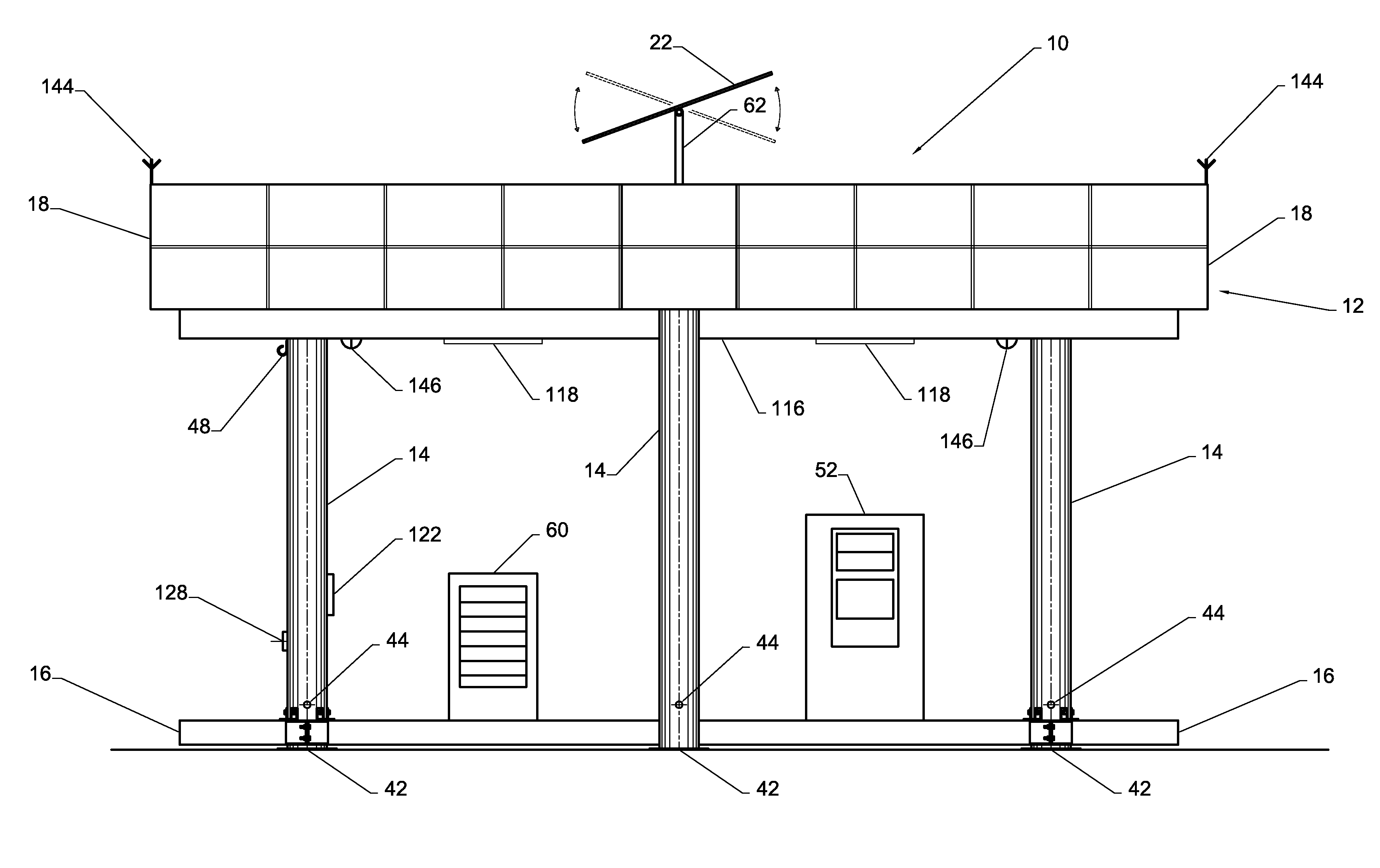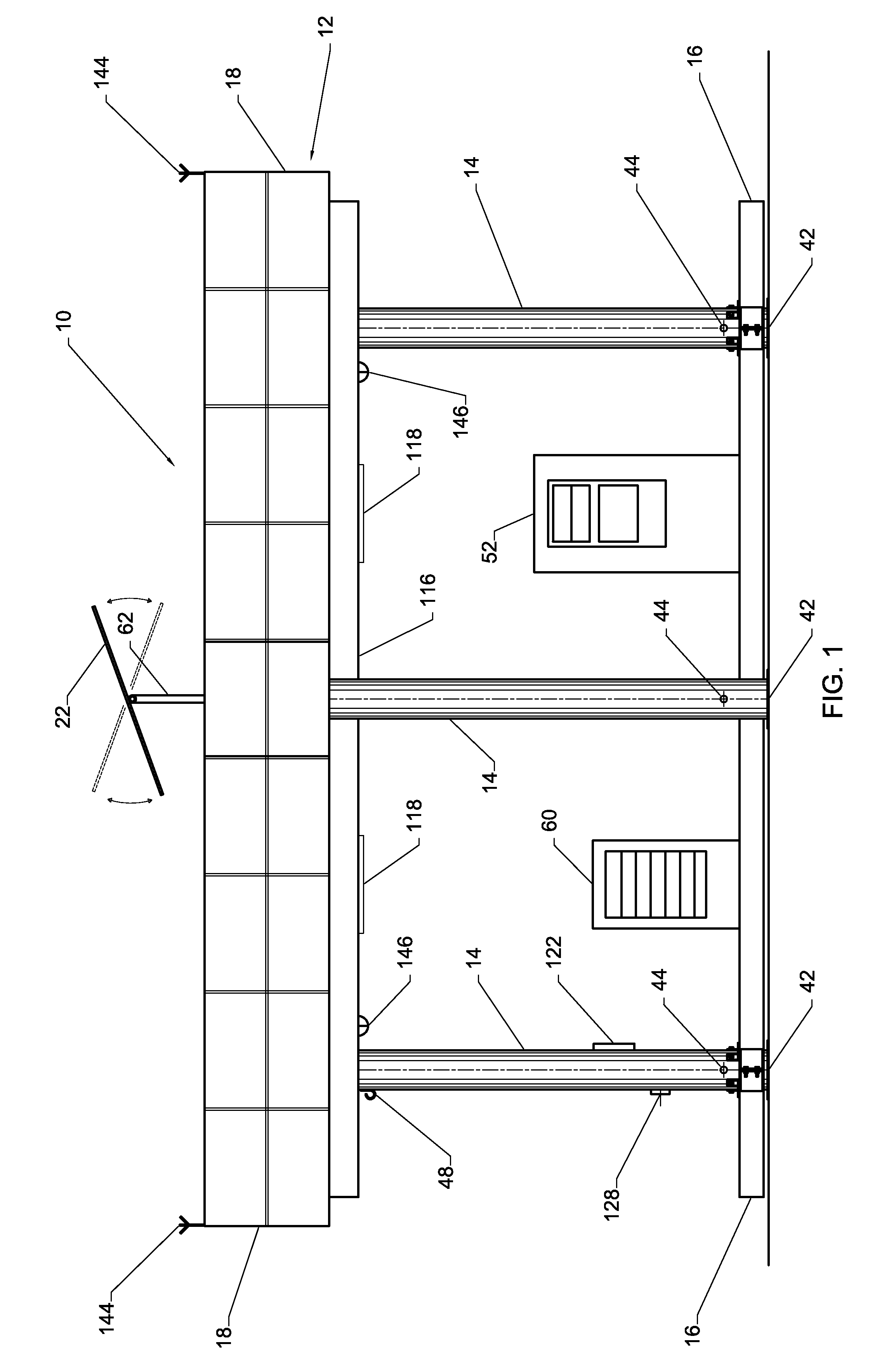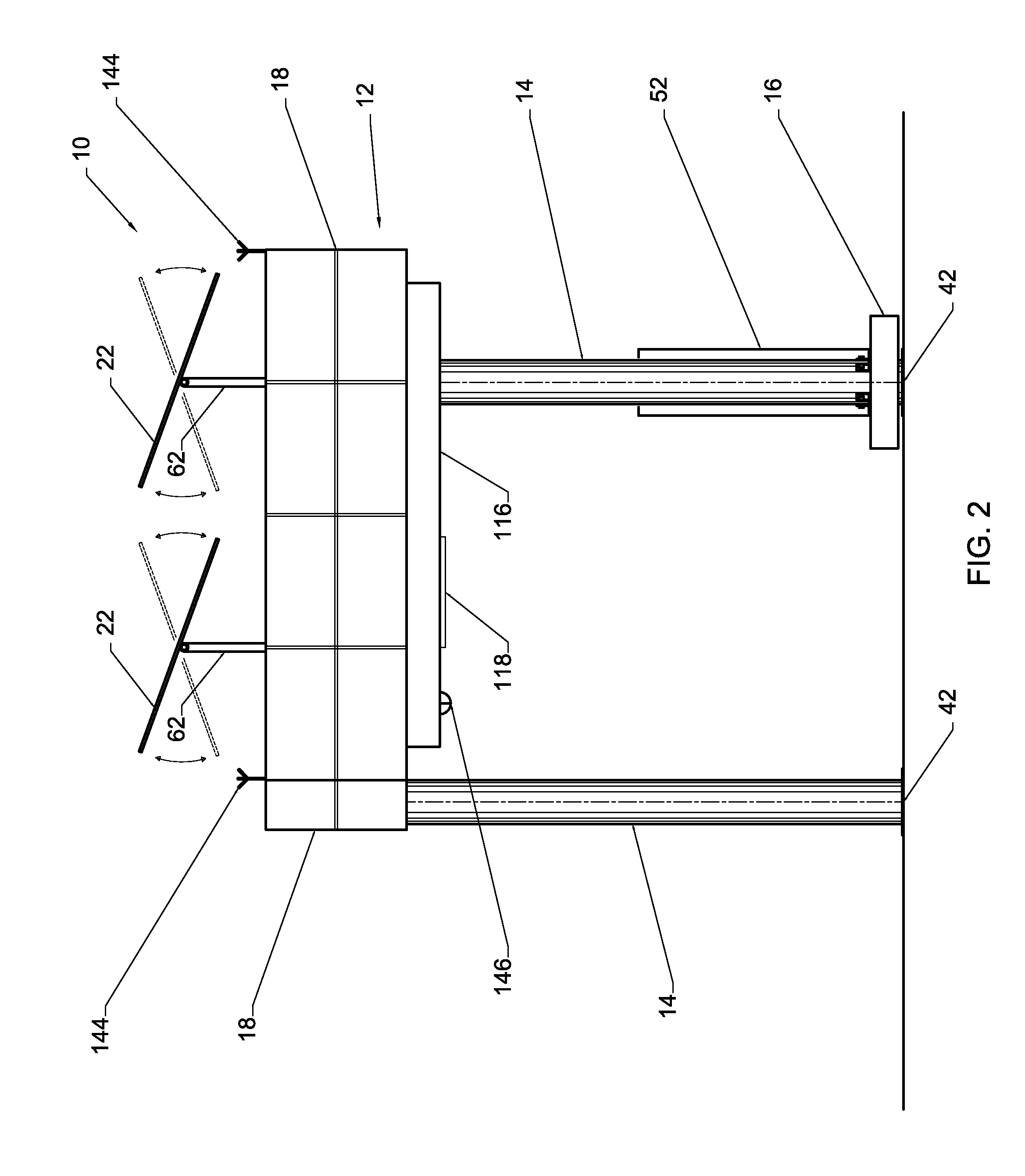Mobile fuel distribution station
- Summary
- Abstract
- Description
- Claims
- Application Information
AI Technical Summary
Benefits of technology
Problems solved by technology
Method used
Image
Examples
Embodiment Construction
[0076]Referring generally to FIGS. 1-5, a modular, environmentally friendly mobile fuel distribution station 10 according to one embodiment of the present invention is shown. With specific reference to FIGS. 1 and 2, the environmentally friendly mobile fuel distribution station 10 includes a generally rectangular operation platform 12, a plurality of legs 14 that support the operation platform 12 in an elevated position above the ground and a central platform 16 that provides a service interface for patrons of the station 10. The operation platform 12 is covered by a plurality of modular panels 18 that function to both block from view, and protect, the main functional components of the station 10 housed within the operation platform 12, as discussed in detail below. As best shown in FIGS. 1 and 3, the central platform 16 is operatively connected to a pair of the legs 14. The legs 14, themselves, are joined together by rigid linkage elements 20, which provide increased rigidity and s...
PUM
 Login to View More
Login to View More Abstract
Description
Claims
Application Information
 Login to View More
Login to View More - R&D
- Intellectual Property
- Life Sciences
- Materials
- Tech Scout
- Unparalleled Data Quality
- Higher Quality Content
- 60% Fewer Hallucinations
Browse by: Latest US Patents, China's latest patents, Technical Efficacy Thesaurus, Application Domain, Technology Topic, Popular Technical Reports.
© 2025 PatSnap. All rights reserved.Legal|Privacy policy|Modern Slavery Act Transparency Statement|Sitemap|About US| Contact US: help@patsnap.com



